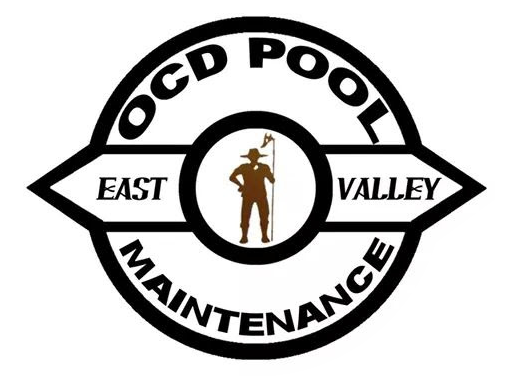Did you know that swimming too soon after pool maintenance can harm your skin and eyes? It’s important to wait the right amount of time before jumping into the pool. This ensures your safety and enjoyment.
Chemicals like pH balancers and chlorination treatments need time to mix well. This prevents swimmers from getting too much of them. The wait time varies, from 20 minutes to 24 hours, especially with super-chlorination.
Let’s explore the wait times for different chemicals. We’ll see why these times are so crucial for pool safety.
Key Takeaways
- Wait at least 20-30 minutes after adding chemicals like pH balancers, alkalinity balancers, and stabilizers.
- Ensure a longer wait time of up to one hour for proper dissolution and dispersion.
- For regular doses of chlorine, wait approximately 4-8 hours before swimming.
- After shocking the pool with a stronger concentration of chlorine, wait at least 24 hours before swimming.
- Safe chlorine levels for swimming are under 5 parts per million (ppm), ideally between 1-3 ppm.
- After adding algaecide, wait approximately 15 minutes before swimming.
- Always test the pool water after the recommended wait times to confirm safe chemical levels.
Common Pool Chemicals and Their Wait Times
Keeping your pool safe for swimming involves using different chemicals. It’s important to know how long to wait after adding these chemicals. This helps keep the water balanced and clean.
Chemicals like alkalinity balancers and pH increasers are often used. They need 15-30 minutes to mix well before you can swim again. This is true for many pool chemicals.
Chlorine is a key chemical for treating pools. Its wait time depends on its form and strength. For tablets and liquid, wait 15-30 minutes. After shocking the pool, wait at least 8 hours, but up to 24 hours. This ensures the chlorine is safe for swimming.
Muriatic acid lowers pH and alkalinity levels. It needs 30 minutes to 1 hour to work. Calcium hardness increasers also require several hours or overnight to distribute evenly.
Algaecides need a long wait, at least 24 hours, before swimming. Flocculants require even more time. You should avoid swimming until the floc settles and is vacuumed out.
Checking chemical levels regularly is key to pool safety. The ideal pH is 7.4 to 7.6. Alkalinity should be 100 to 150 ppm, and calcium hardness 200 to 400 ppm.
Following these guidelines makes swimming safer and more enjoyable. It reduces the risk of irritation or respiratory problems. So, waiting the recommended time is crucial for both pool maintenance and safety.
How long after pool maintenance can you swim?
Waiting times to swim after pool maintenance vary based on the chemicals used. For example, after adding chemicals for alkalinity and pH balance, it’s safe to swim in about 20 minutes to 1 hour. These chemicals usually don’t take long to make the water safe.
But, stronger chemicals like pool shock need more time. Experts say to wait 12 to 24 hours after using pool shock. This is because the high chlorine levels can irritate your skin and eyes if you swim too soon. So, it’s important to wait patiently to avoid any discomfort.
Non-chlorine shocks have shorter waiting times. Still, it’s best to check that chlorine levels are below 5 ppm before swimming. Safe swimming levels are between 1 – 4 ppm, making sure your swim is safe and enjoyable.
Keeping an accurate swimming schedule also means testing the water often. It’s best to test the water at least once a week, or more if you use the pool a lot or when it’s hot. You can use liquid test kits or strips to check the water’s safety. Always check chlorine levels twice a week to keep the pool balanced and safe.
Shocking Your Pool: Time to Wait
Knowing when it’s safe to swim after shocking your pool is key. Shocking involves adding a lot of chlorine or other chemicals. This kills bacteria and controls chloramines.
For chlorine shocks, wait at least 24 hours before swimming. This lets chlorine do its job and levels drop to 1-3 ppm. Always test the water before swimming, aiming for 5 ppm or less.
It’s best to shock at night because UV light weakens chlorine during the day. Run the pump and filter for 8 hours after shocking, or 24 hours if treating algae. This helps spread the chemicals evenly.
Non-chlorine shocks, however, let you swim in about an hour. They don’t raise chlorine levels much, making them good for quick maintenance.
The amount of shock used is also important. Use 1 to 2 pounds per 10,000 gallons of water. Shock more often in sunny weather or after rain.
Not waiting long enough after shocking can be dangerous. It can cause skin and eye problems, throat issues, and lung issues if you swallow pool water. Always wait until chlorine levels are safe before swimming.
Conclusion
Knowing when to swim after pool maintenance is key for safety and fun. The type of chemical, how dirty the water is, and the weather all matter. They help decide how long to wait before jumping back in.
For example, some chemicals let you swim in just 15 minutes. But others, like chlorinated shock, need at least 24 hours. Remember, using more chemicals means waiting longer to keep the water safe.
It’s also important to shock your pool weekly. This stops chloramines from making the water harsh. Using test kits at home or services at OCD Pool Maintenance helps keep the water perfect.
By following these tips, you can make pool care easy. This ensures your pool is always ready for a safe and enjoyable swim.



